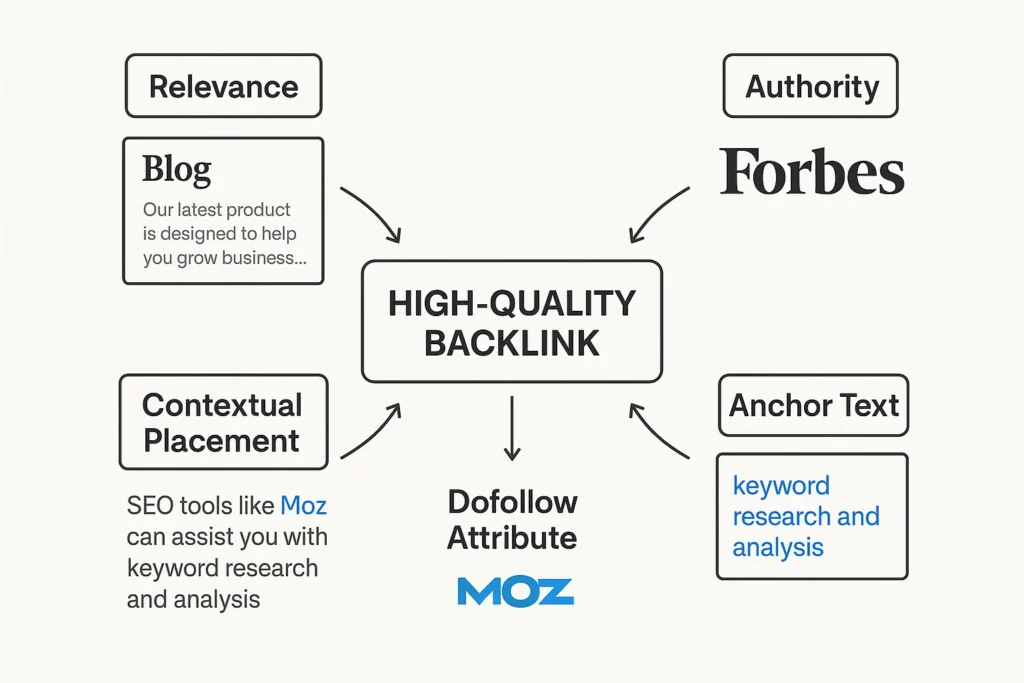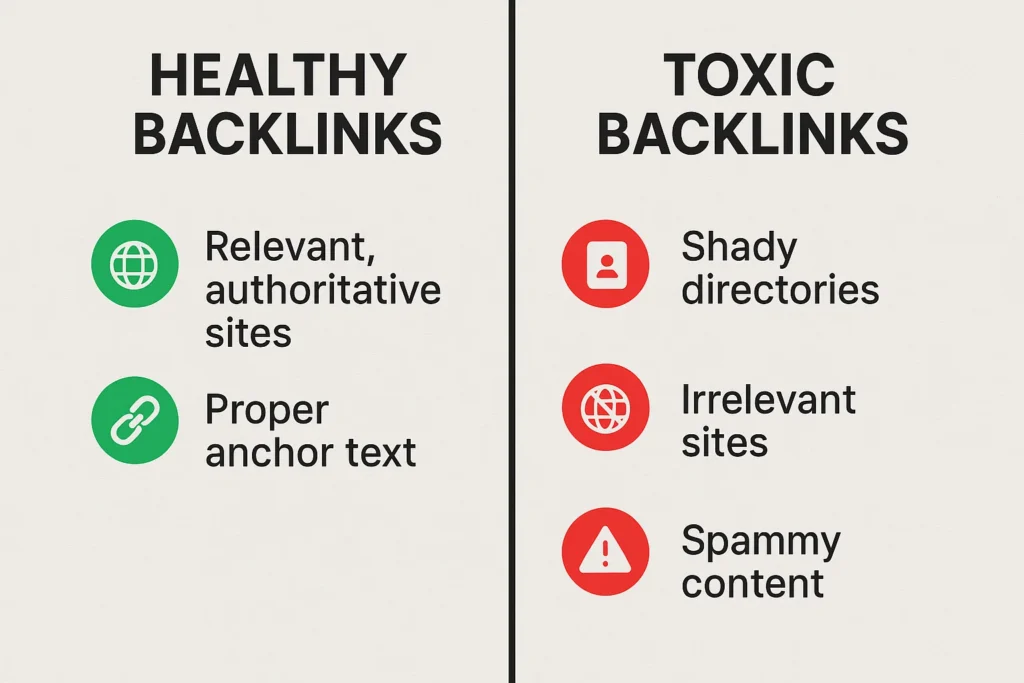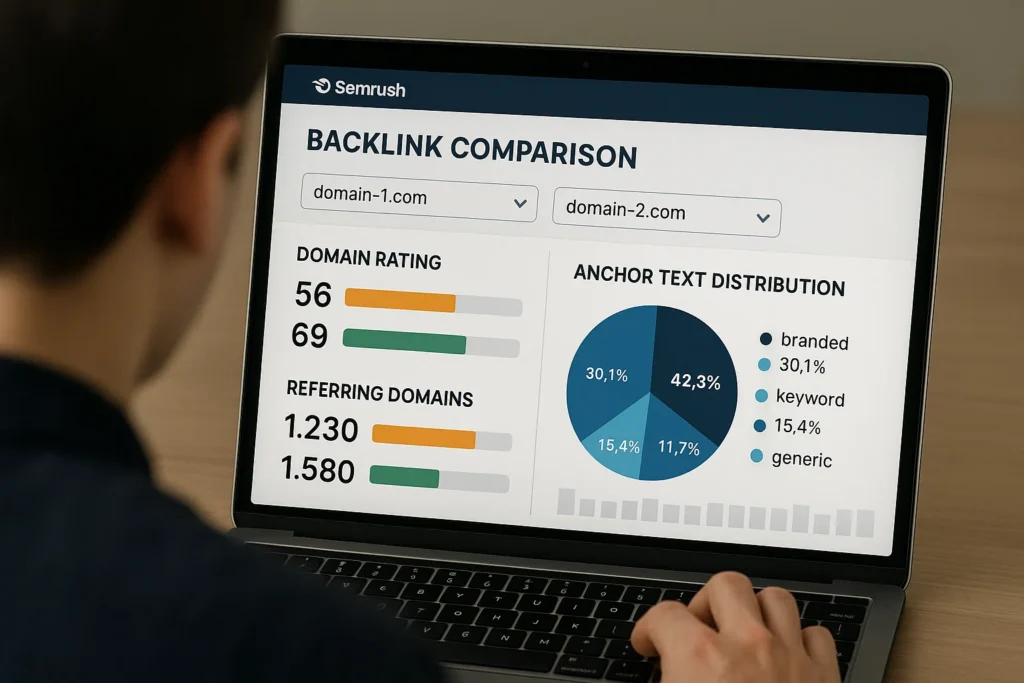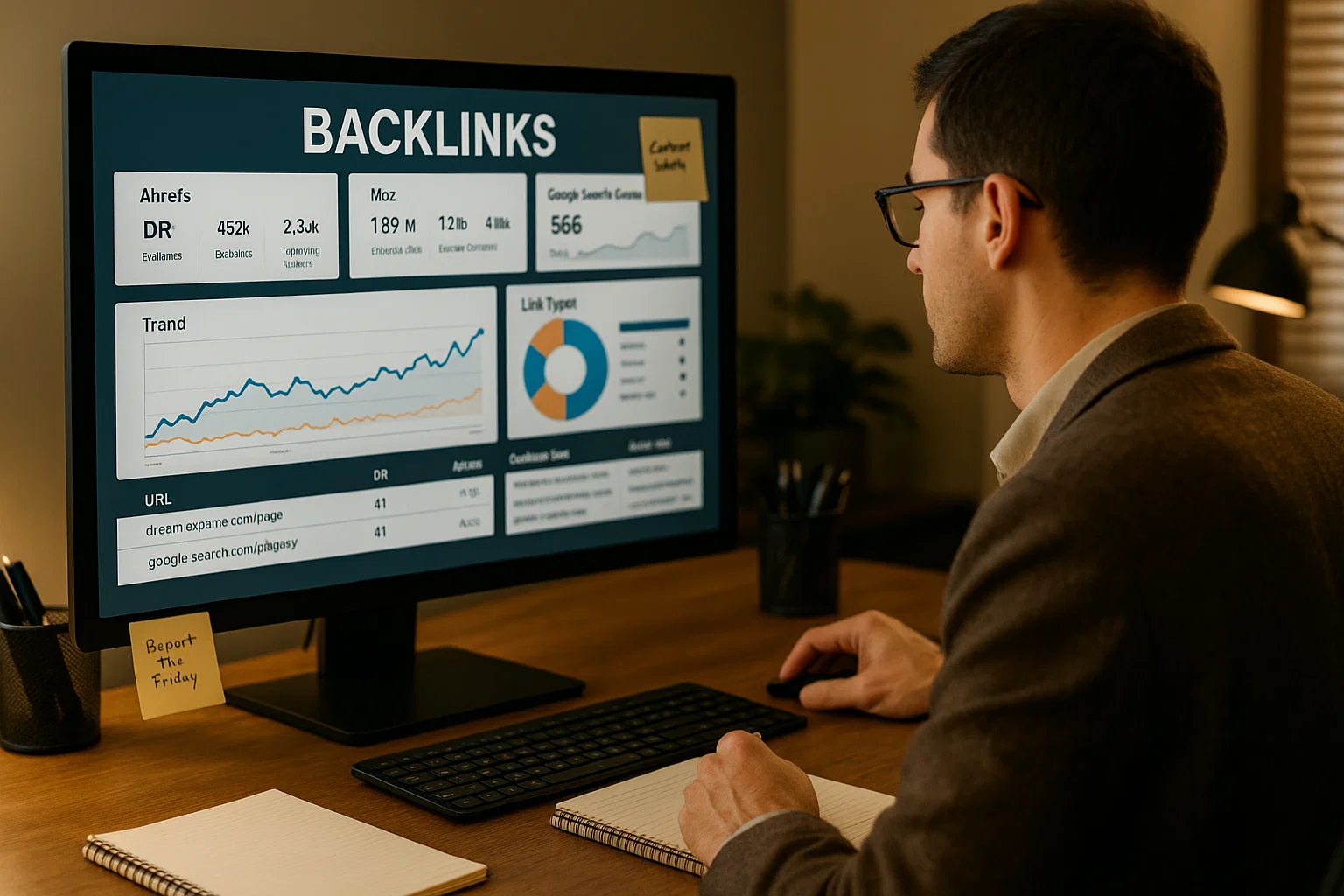In a fiercely competitive digital terrain. Getting found on the search engines is key to online success. At the core of these efforts is Search Engine Optimization (SEO), and one of the most important aspects of SEO is backlink management.Backlink Watch
This expanding list of tasks can be kicked from one end to the other in a “backlink watch,” a systematized and ongoing process of surveillance, review, and improvement of your backlink profile. We’ll take a look at the anatomy of a good link, how to check up on your own profile, and the debate around keyword density in anchor text.Backlink Watch
That’s not a ’do it and forget it.’ Carefully monitoring backlinks keeps your site away from penalties, helps to discover new opportunities for growth and provide your link profile insights into the successes of the competitors, leading to a better maintained and improved search engine ranking.
Part 1: The Basics of Backlinks
What Exactly is a Backlink?
A backlink is a link that one website gets from another website. When another site provides a link to your page, that’s a backlink. They are described in internet-speak as “inbound links” or “incoming links” which are basically a byword for bringing customers to your website from a different website.Backlink Watch
Backlinks are considered as a “vote” for a given website. When a respected site links to your content, it demonstrates to search engines that your content is reliable, informative, and valuable. It’s a basic concept that has driven search algorithms for decades.Backlink Watch
The more good votes your site gets, the greater its authority and trust in the eyes of search engines. This means better rankings for your desired keywords, which inevitably brings you more organic traffic.Backlink Watch
But not all backlinks are created equal. Your link quality, relevance, and relevance are important, not the quantity. This difference is the core of the successful backlink strategy.Backlink Watch
Why Backlinks Are SEO Gold
Backlinks are an important ranking signal for most search engines. They act as social validation of your content quality. It’s like if one expert were recommending another expert to a fellow professional.Backlink Watch
Powerful backlink profiles mean higher Domain Authority (DA) or Domain Rating (DR). These are proprietary scores created by SEO software companies like Moz and Ahrefs aimed at estimating the ranking potential of a web page. Higher scores usually mean better performance in search indexes.Backlink Watch
More than lists, Backlinks can also refer big bursts of traffic. On a relevant popular Blog or Newssite Just one link on a popular blog or news site and a surge of highly interested visitors clicking towards your site.Backlink Watch
And last but not least, backlinks help a search engine discover and catalog your content more quickly. When a high-authority site links to a new page on your site, search engine spiders can crawl down that link to discover and index your new content at a faster pace.Backlink Watch

Anatomy of a good backlink
An excellent backlink, in the truest sense of the word, has several key qualities. Relevance, first and foremost. A link from a digital marketing blog to your SEO agency is very relevant. A link from a pet grooming blog to your site is relevant, but because it’s the same site it’s not a relevant link, and could be interpreted as spam.Backlink Watch
The linking domain has to hold authority. Backlinks from big news sources or industry frontrunners are recommended. On the other hand, a link from a brand new ‘new face’ blog doesn’t add much authority.
And if you are unsure, the anchor text is the clickable text in a link. It’s best when the anchor text has something to do with the content of the page you’re linking to. Like anchor text “best keyword research tools” links to a page that reviews keyword research tools.Backlink Watch
Where the link is placed on the page is significant too. A contextual link (a backlink from directly in the main body of an article) is often worth more than a link from a footer or a sidebar directory.Backlink Watch
Dofollow vs. Nofollow Links
All backlinks by default are ”dofollow” links. It’s a link that transfers what’s known as “link juice” from one site to another. These are the best kinds of links when it comes to boosting your SEO performance and authority.Backlink Watch
A “nofollow” link has a small line of code, rel=”nofollow”, which signals search engines that they should not flow any link juice through that link. These were designed to fight spam in blog comments and are now employed on paid links, user-generated content, and other places where a site doesn’t want to officially vouch for the destination page.Backlink Watch
Nofollow links don’t provide a direct rank boost, but they’re never a waste. They can continue to send some legitimate referral traffic and help to make a back link profile look more natural. Purely a profile of dofollow can look somewhat unnatural to the search engines.Backlink Watch
Other properties such as rel=”sponsored” (in the case of paid or sponsored links), and rel=”ugc” (user-generated content) give more context to these search engines about the nature of the link. A natural-looking portfolio contains a variety of these types of links.Backlink Watch
Part 2: The Problem With Keyword Density
Anchor Text Keyword Density?
The anchor text keyword density is the proportion or ratio showing how many times a particular keyword/keyphrase is used as anchor text in your backlinks profile. For instance, if you have 100 backlinks and 10 of them are using the anchor text “backlink watch” your keyword density for that phrase would be 10%.
The concept of having a keyword density an old school relic of SEO. The idea was that if you wanted to rank for a keyword, you had to have a ton of backlinks with that keyword as your anchor text—so you could show Google how important that term was to your page.
This opened the door to rampant manipulation. SEO professionals would create thousands of irrelevant links with the same exact anchor text in an attempt to manipulate the system. This practice, termed over-optimization, is one of the biggest no-no’s for the search engines currently.
The 1.00% Rule: An Updated Analysis
“The target density above than 1.00,” from the original question, converts to 1% keyword density. The old SEO would have set targets for percentages of their main keywords. Today this is old and dangerous business.
Zeroing in on a specific number, like 1% or any other percentage, is the wrong approach. Search engines today, most notably Google with its Penguin and later their core algorithm changes, are designed to notice unnatural linking patterns. A profile with uniform anchor text is extremely suspicious.
Consider how we connect in person. They employ many different words. Some might use the same keyword, while others might use the title of the article, the brand of the outlet, a generic phrase like “click here” or even just the raw URL.
So while a bit of anchor text that is the same as your target keyword will be an advantage, it should only be a small percentage of an highly varied and natural looking profile. Consciously carrying it above a certain level is not the right attitude.
From Density to Topical Relevance
Keyword density vs Topical relevance in modern SEO. Search engines are aware of synonyms, related concepts, and the general topic of a page, rather than just a single keyword. This is an example of something Google refers to as “semantic search.”
Every natural anchor text profiles will contain varieties of anchor since when all of them are seen, it positions the topic of your page. It produces a far more powerful and credible signal than a list of repetitive keywords.
For a “backlink watch” page some natural coverage could be:
Exact Match -“backlink watch” (used sparingly)
Phrase Match: “a guide to backlink watch”
Partial Match/LSI:“how to monitor your backlinks”“analyzing inbound links”“backlink audit tools”
Branded: ”YourCompanyName guide”
Naked URL: “www. yourcompany. com/blog/backlink-watch”
Generic: “read more here.” “this article”
This varied mix looks a lot more natural, and helps search engines understand a lot more context about the content of your page. It’s about creating a cloud of associated terms, rather than nailing one term.
Step 3: How to Use Your Backlink Watch Strategy
Step 1: Choosing Your Toolkit
An effective backlink watch is based on using great tools. There is no single tool that will “find all my backlinks”, so it is best to utilize multiple. Google Search Console is an obvious and critical starting point because it lets you see how Google views your link profile.
All-in-one search engine optimization platforms have become the norm.
Ahrefs: Is known for one of the biggest backlink indexes with one of the freshest datasets. Its Site Explorer is a fundamental tool for an SEO.
SEMrush: Yet another all-rounder complete with solid backlink analytics, audit tools and competitor analysis features.
Moz Pro: Creator of the Domain Authority metric, Moz provides Link Explorer to dig into and monitor your profile.
Majestic: Is focused only on backlink analysis, using metrics such as Trust Flow, and Citation Flow to measure a site’s link quality.
Each tool has its own crawlers and metrics so if you use at least one of the paid tool while also using GSC, you can have a much fuller view of your backlink profile.
Step 2: Initial backlink audit A backlinks audit
This is the first step towards understanding the current profile of your website and compare it to your competition.
It starts with a baseline. An audit I mean by this is the export of all backlinks from all the tools at your disposal to your domain. Develop one master document where you list the information pulled from each sheet (get rid of the duplicates).
You’ll need to assess your backlinks with a number of important metrics provided by your tools, for each backlink:
The linking URL (page url that the link appears on).
The Domain Rating / Domain Authority of the referring domain.
The anchor text used.
Whether it’s a Dofollow or Nofollow link.
A calculated “Spam Score” or toxins attribute value, if available.
Pass through that list, with a classification of each link. You can have something rudimentary like “Good,” “Neutral,” or “Potentially Toxic.” Good links are those from other relevant, authoritative sites. Neutral links can also be sent from low-authority but innocuous websites. There is only one kind that you should worry about: toxic links.

Step 3. Find and handle toxic backlinks.
Backlink discussed so far can also actively hurt your site rankingsEditorial backlinks. They’re commonly a result of competitors maliciously attacking a website using negative SEO or even a leftover from old, black-hat link-building tactics. Finding them is an important part of your backlink monitoring.
Warning signs of toxic backlinks are:
Low-quality directory link farms.
Links from non-relevant foreign language or off topic sites.
Links with exact match anchor text that are heavily over-optimized.
Links from websites that sell links or participate in Link Farms.
A high spam score according to your SEO tool.
When you have a list of unnatural bad backlinks, the first thing to do is to ask the webmasters to take them down. Email and ask the webmaster of the linking site to remove the link. Track your attempts to reach out.
If requests for the removal are unsuccessful, the Disavow Tool is your backstop. This is where you get to enter a list of domains or URLs that don’t want Google judging you by their backlinks. Use this at your own risk as you can hurt your rankings by disavowing good links. Disavow links ONLY if they are clearly bad, and you can’t get them removed manually.

Step 4: Analysis of Backlinks for Competitors
Competitive analysis is an essential part of a backlink watch. It provides a road map of your own for where to build your links by examining where your top competitors are getting their links. It is one of the best ways to uncover new opportunities.
Find your top 3-5 competitors in organic search. Then you can run a “Link Gap” with your SEO tools. This feature reveals the sites that are linking to your competitors (and not to you). This list is a treasure trove of potential link targets.
Analyse the best backlinks of your competitors. What type of content got them that link? Was it a study, an infographic, a free tool, or a complete guide? This insight can support your content strategy, allowing you to develop content tailored to secure high authority links.
By consistently monitoring your competitors’ recent backlinks, you can keep tabs on their strategy, and also find out new link building methods that work in your industry. If there is a publication from The hearing from them then maybe you can pitch a similar but better story to the same reporter.
Step 5: Establishing the Continuous Monitoring Process
ICYMI – A Backlink Watch Is Not a One-Time Audit A backlink watch is not a once and done check. You can set alerts from every SEO tool worth its salt. You might have notifications on a couple significant occurrences.
Configure alerts for new backlinks. This way you’ll be able to check out a link ASAP while it is still fresh. You can thank the webmaster that have a good link and to begin relationship, or you can quickly find and neutralize the new potentially harmful link.
Add notifications for lost backlinks. Sometimes, useful links are lost when a website is redesigned or an article is updated. A broken link alert give you an opportunity to contact the webmaster, let them know the link is broken and many times, has it restored. It’s called link reclamation.
Regularly schedule a monthly or quarterly review of your full backlink profile. This lets you zoom out, measure your anchor text diversity, and guarantee your profile growth is looking organic and well sustained over time.
Part 4: Sophisticated Backlink Watch Tactics
Unlinked Brand Mentions
Frequently websites will mention your brand, company or product without linking back to your site. This lack of links is low-hanging fruit for link-building. Ahrefs and SEMrush are tools that include features to dig up these mentions from across the web.
Contact the author or the webmaster when you spot an unlinked mention. Thank them for the shout out for your brand and kindly encourage them to link to your site to add context and value for their readers. It’s an easy and very effective way to build up good links.
Anchor Text Distribution Analysis
In addition to checking for one specific keyword’s density, an advance backlink watch should measure your complete anchor text profile. Your SEO reporting tool should allow you to run a report that shows all the anchor texts used to link to your site and the count of each anchor text.
A natural profile will have a high majority of branded anchors, i.e., “YourCompanyName” and naked URL anchors. Partial match, phrase match, and generic anchors are also natural. If possible, try to get those long-tail LSI with the exact match anchors built for google map as a foundational links when you’re architecture links for a newly branded website. 3. Use Naked URL and “Read More” or “Click Here” Anchors Let’s face it, the majority of your link building profile for your commercial keywords can’t get away with the same links it did in the past or you’ll risk a penalty. 365体育滚球三大网站
If you come across a profile that is heavily weighted to exact-match anchors, use it as an indicator that you should add a more diverse strategy to your link-building efforts. You should be concentrating on building branded and/or natural keyword rich anchor text links to help balance out your profile and limit your risk of over-optimization penalties.
Link Reclamation
Link reclamation is the practice of recognizing and fixing broken links communicating to your site. This is often a side effect when you update a URL, remove a page, or the linking site mistakenly adds a typo in the URL. These are dead links and therefore lost juice.
Broken inbound links to your site You can use your SEO tools to search for them. With a list, you have two key options. If the page was relocated, you should like fallow a 301-redirect from the old URL to the new one.
If the referring page has been removed, contact the Webmaster of the referring site. Let them know of the broken link and pitch a similar, or relevant working page on your site as a replacement. This not just corrects the dead link but also shows the other site how to get your shit together and make things easier for its site visitors.
Conclusion: Your Offense And Defense Gone Proactive
It’s the natural progression of link building from passive to active, from non-strategic to strategic: backlink watching. It’s realizing that your backlink profile is a “living” asset that should be constantly looked after and maintained. It is a defence and an attack.
Defensively, it shields your stripes from the danger of toxic links and negative SEO. Performing regular audits and disavowing bad links, and you preserve the health and integrity of your site’s authority. This is your shield.
On the offensive side, it’s a great growth tool. By studying your competitors, recovering lost links, and finding new ones, you can gradually establish a far more powerful and authoritative backlink profile than those of your competitors. This is your sword.
Forget about strict rules like making sure your keyword density is just right. Instead, throw your support behind main components of the contemporary canon – topicality and colloquial speech. Create a varied, healthy slap up backlink food, and you will eat quality organic traffic for a long time.
For more interesting topics visit WISENEWS & QUALITYINFO

